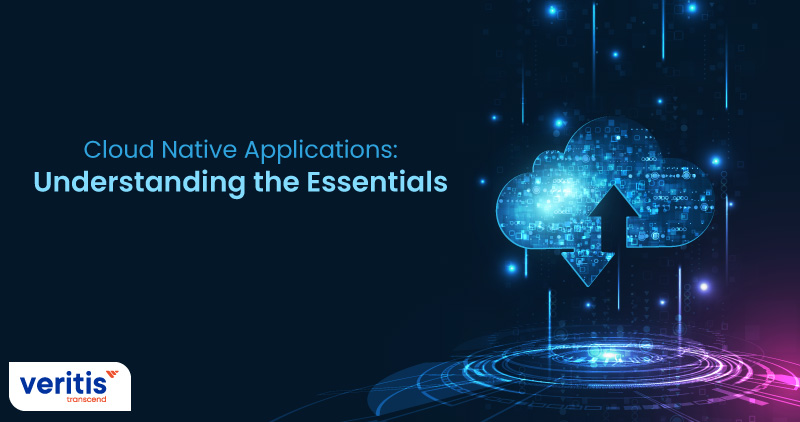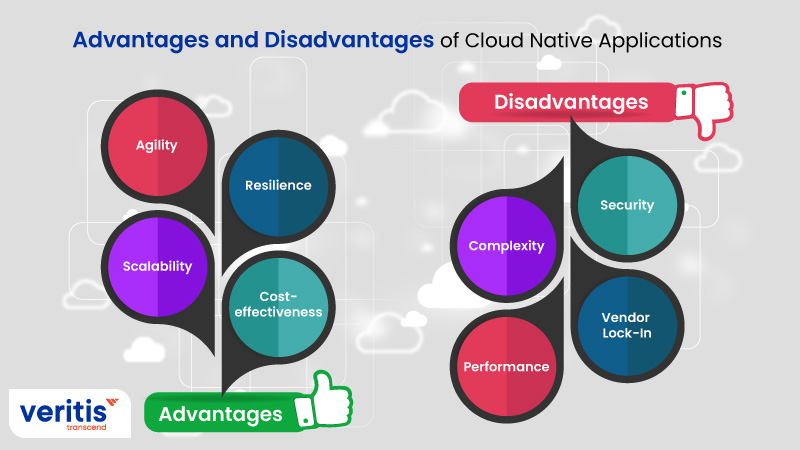
Cloud native applications are a new approach to software development and deployment that is becoming increasingly popular in recent years. With cloud native applications, organizations can develop and deploy software more efficiently and cost-effectively. In this article, we will explore six key things you need to know about cloud native applications and why they are essential for your business.
1. What are cloud native applications?
Cloud native applications are built for the cloud, designed to be highly scalable, resilient, and portable, and developed using cloud-native technologies. The cloud-native approach emphasizes using microservices, containers, and serverless computing to enable rapid and continuous software delivery.
Microservices architecture is an approach to building software applications as a suite of small, independently deployable services. Containers are lightweight, standalone, and executable packages of software that bundle application code and dependencies. Finally, serverless computing is an execution model where the cloud provider manages the infrastructure and the runtime environment.
2. Why are cloud native applications critical?
Cloud native applications offer several benefits over traditional monolithic applications. They are highly scalable, efficiently handling large amounts of traffic and data without compromising performance. They are also highly resilient and can continue functioning even if one or more components fail.
Additionally, cloud native applications are highly portable, which means they can be easily moved between different cloud environments, such as public, private, and hybrid clouds. This gives organizations greater flexibility and agility in deploying and managing their applications.
3. What are the critical components of cloud native applications?
Cloud native applications are built using several vital components, including containers, microservices, and serverless computing. Containers provide a standardized packaging format for applications, enabling organizations to isolate and manage applications and dependencies.
Microservices architecture allows organizations to break down applications into smaller, more manageable pieces, which can be developed and deployed independently. Finally, serverless computing allows organizations to run applications without worrying about the underlying infrastructure.
4. What are the benefits of using containers?
Containers offer several benefits over traditional virtual machines. First and foremost, they are lightweight and portable, making deploying and managing them easy. They are also highly scalable, making handling large amounts of traffic and data easy without compromising performance. Additionally, containers provide a high degree of isolation between applications running on the same server, making them more secure.
5. What are the benefits of using microservices?
Microservices offer several benefits over traditional monolithic architectures. First, they are highly scalable, as each service can be independently scaled to handle the application’s specific needs. They are also highly resilient; each service can continue functioning even if others fail.
Furthermore, microservices are highly modular, which means they can be easily updated and maintained without affecting the rest of the application. This makes it easier for organizations to add new features and functionalities to their applications, making them more agile and responsive to changing market conditions.
6. What are the benefits of using serverless computing?
Serverless computing offers several benefits over traditional server-based architectures. First and foremost, it allows developers to focus on writing code rather than managing servers. This makes deploying and scaling applications more manageable, as developers can write code and let the cloud provider handle the underlying infrastructure.
Additionally, serverless computing is highly cost-effective, as organizations only pay for their computing resources. This makes it easy to scale applications up and down based on demand, ensuring that organizations only pay for what they need.
Useful link: Which AWS Cloud Management Tools Should You Use to Manage Your Business
Advantages and Disadvantages of Cloud Native Applications

Like any technology, cloud native applications have both advantages and disadvantages. Here are some of the main benefits and drawbacks to consider before deciding whether to adopt a cloud native approach:
Advantages:
Scalability: They are designed to be highly scalable. By leveraging technologies like containers and serverless computing, applications can be scaled up or down quickly and efficiently to meet changing demands. This means that organizations can easily handle spikes in traffic or usage without worrying about provisioning new infrastructure.
Cost-effectiveness: It can be more cost-effective than traditional applications. By using a pay-as-you-go model for infrastructure and services, organizations can save on upfront costs and only pay for what they use. Cloud native applications are often more efficient, reducing infrastructure and maintenance costs over time.
Agility: They are built to be agile and responsive to changing business needs. Using DevOps practices like continuous integration and delivery, organizations can release new features and updates quickly and easily, giving them a competitive advantage in fast-moving markets.
Resilience: They are designed to be resilient to failures. Using distributed architectures and fault-tolerant design patterns, applications can continue operating even if individual components fail. This makes cloud native applications more reliable and available than traditional applications.
Useful link: 6 Ways Why Cloud Based Solutions Benefit Small and Medium Sized Enterprises
Disadvantages:
Complexity: Cloud native applications can be more complex to develop and maintain than traditional applications. Developers must understand modern DevOps practices and cloud-native technologies like containers and serverless computing. This can be a steep learning curve for organizations new to cloud native development.
Security: Cloud native applications can introduce new security risks. By using third-party services and relying on shared infrastructure, organizations must be vigilant about protecting their data and applications from potential threats. This requires a robust security strategy and ongoing monitoring and maintenance.
Vendor Lock-In: Cloud native applications can be subject to vendor lock-in. Organizations may need help to switch to a different provider or move their applications to another platform using proprietary services and technologies. This can limit their flexibility and increase their dependence on a single vendor.
Performance: Cloud native applications may be subject to performance issues. By relying on shared infrastructure and distributed architectures, applications may experience latency or other performance problems that can impact user experience.
Overall, the advantages outweigh the disadvantages for many organizations. However, it’s essential to carefully consider the benefits and drawbacks before deciding whether to adopt a cloud native approach. By doing so, organizations can ensure that they’re making the right choice for their business needs and can mitigate any potential risks.
Conclusion
Cloud native applications represent a significant shift in how organizations develop and deploy software. Organizations can build more agile, scalable, and cost-effective by leveraging cloud-native technologies such as microservices, containers, and serverless computing.
However, building cloud applications requires a different approach to traditional application development. Developers must understand cloud-native technologies and be comfortable working with modern DevOps practices, such as continuous integration and delivery (CI/CD) and automated testing. Additionally, organizations must ensure they have the proper infrastructure to support cloud-native applications, such as a container orchestration platform like Kubernetes or a serverless computing platform like AWS Lambda.
Overall, cloud native applications represent a significant shift in how organizations develop and deploy software. By embracing this approach, organizations can build more agile, scalable, and cost-effective cloud-native applications and stay ahead of the competition in today’s fast-paced digital landscape. In that case, it’s essential to work with experienced developers who have a strong understanding of cloud-native technologies and best practices and can help you navigate the complex landscape of cloud native application development.
Got Questions? Schedule A Call
Also Read:
- Cloud Adoption Strategy: Which Approach Would be Most Effective for Your Company?
- How Does Cloud Computing Help Fintech?
- What is Cloud Security Posture Management?
- What is Cloud Migration? Strategy, Process, and Tools
- What You Should Know About Containers Threats in Cloud Computing
- AWS Vs Azure Vs GCP – The Cloud Platform of Your Choice?